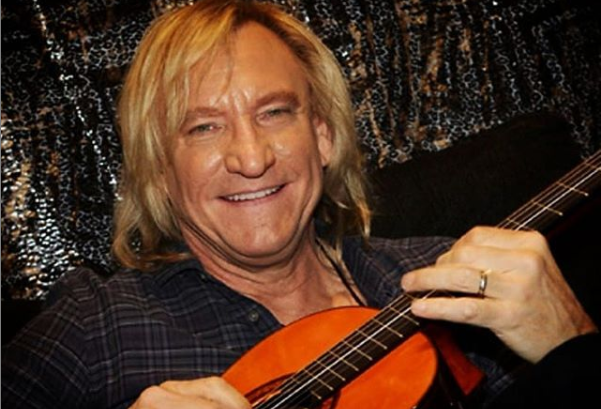Joe Walsh (Joseph Fidler Walsh) is an American singer, guitarist, and songwriter. He has been a member of five successful rock bands: James Gang, Barnstorm, Eagles, the Party Boys, and Ringo Starr & His All-Starr Band in a career spanning over 40 years. He was also part of the New Zealand band Herbs. He was also a member of the short-lived supergroup The Best that existed in the 1990s.
He has also enjoyed success both as a solo artist and as a prolific session musician, having featured on a wide range of other artists’ recordings. In 2011, Rolling Stone placed him at 54th on their list of ‘100 Greatest Guitarists of All Time’ in 2011. Before reaching a national audience as a member of the James Gang, whose hit song ‘Funk # 49’, he played with several local Ohio bands. Funk song # 49 highlighted his prowess as both a guitarist and a singer.
In a new appearance on the Wong Notes podcast (via Ultimate Guitar), Eagles guitarist Joe Walsh has spoken about how he gave Jimmy Page his first Gibson Les Paul guitar, which would eventually become his one of Led Zeppelin’s hallmarks.
“Oddly enough, Jimmy Page played a Telecaster in all of The Yardbirds, and the James Gang opened for Led Zeppelin when they first came to America,” Walsh recalled. “We opened for them, and they played four or five places – one of them was Cleveland. And so I met Jimmy, and their first album had just come out, and people were just starting to discover Led Zeppelin. The word of mouth was huge, but a lot of people came to hear The Yardbirds songs because that’s all they knew.”
“So Jimmy and I became friends because pretty much that’s a three-piece band with the lead singer, and Jimmy said to me, ‘Look, The Yardbirds is great, and I played on so many records…’ He played on so many sessions! If you look up what he played on, you’ll be amazed,” Walsh added. “But he said, ‘This Telecaster ain’t cutting it for Led Zeppelin. And I don’t know what to do.’ Now, Les Pauls virtually didn’t exist in England at the time. They didn’t hit popularity yet, and they were pretty easy to find because they hadn’t been discovered – and they didn’t cost very much.”
Walsh was an owner of two 1959 Gibson Les Pauls gladly handed over one to Jimmy Page. “I found one in the basement of a family-owned music store; I think in Athens, OH, where Ohio University is. It was just in the basement. I just walked in another garage, and it was all boxes – and I said, ‘What do you get downstairs?’ And there was a Les Paul! And I found another one through a friend, I traded him some stuff for one. So, one I really liked and one I just was saving for a rainy day, so I gave Jimmy that one.”
As if that weren’t enough, another of his island friends, Pete Townshend, also turned to Walsh for sonic advice on his new recordings. The leader of the Who had been using a Gibson SG in his live performances plugged into a good handful of Hiwatt heads and the North American responded by putting in his hands his 1959 Gretsch 6120 and the Fender Bandmaster that would end up being the main protagonists of that imperishable work called Who’s Next.
“Townshend had finished Tommy and was going through the same changes,” Walsh explained. “We got along so well that I gave him the fat orange Gretsch guitar that he used on Who’s Next and Clapton’s Rainbow Concert.”
Unlike Page, Townshend never brought to his gift before seeing it. “I opened the case, and it was bright orange, and I thought, ‘Ugh! It’s horrible, I hate it,’” Townshend revealed in a 1972 interview with Guitar Player. “I went home and went into my studio and plugged it in, and it totally wrecked me out. It’s the best guitar I’ve got now.”
“I used that guitar on every track on Who’s Next. It’s the best guitar I’ve ever had,” Townshend continued. “It’s the finest guitar I’ve ever owned; it’s the loudest guitar I’ve ever owned. It is so loud, man; it whips any pickup that I’ve ever come across. It’s maybe six or seven times louder than anything I’ve come across. If I plugged it in my amp tonight, normally I’d be working on volume six or seven, but I would work this guitar on one.”

